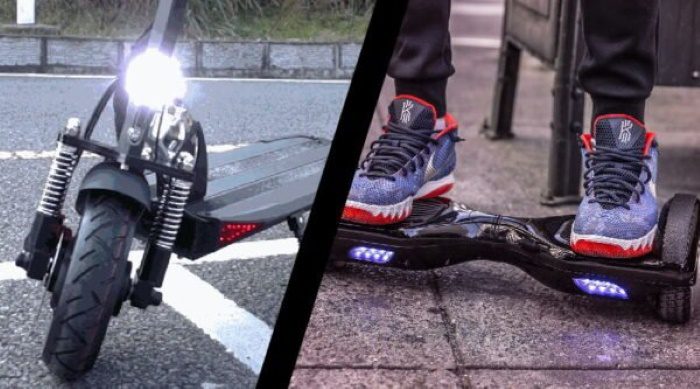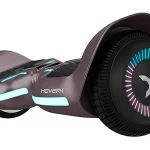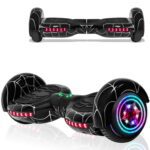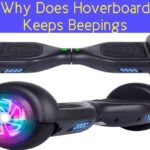Deciding between a scooter or a hoverboard can be tough. Both are really fun ways to get around, but they each have their pros and cons. This guide will compare all the key factors to consider so you can determine which ride is best suited for your needs and preferences. In this article we talk about Scooters vs. Hoverboards-The Right Ride for You In 2024.
Speed and Power
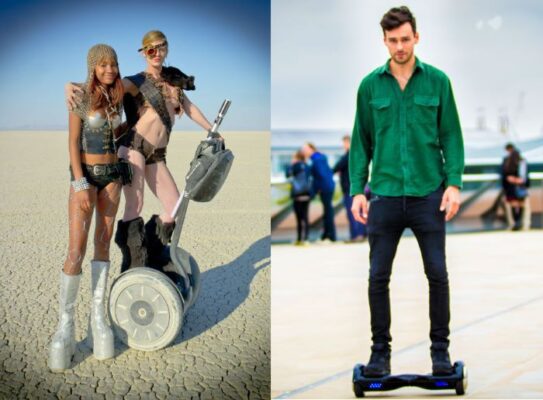
When it comes to speed, scooters are the clear winners. While most hoverboards max out at around 10 mph, fast scooters can reach 15-30 mph. Scooters also accelerate faster and can handle hills and uneven terrain better with their more powerful motors. This makes them better for longer commutes. Hoverboards are best for slower recreational riding at under 10 mph.
Some fast scooters may be too powerful to legally ride in certain areas, so check your local laws. Most hoverboards comply with common speed regulations for personal mobility devices.
Comfort and Control
Scooters offer better comfort and stability overall. Their wider decks and handlebars make balancing easier compared to the small foot platforms of hoverboards. This also allows for a more natural standing position. Scooters provide good shock absorption too.
However, hoverboards allow you to go in any direction just by leaning, giving them very intuitive controls. This is easier to master than the hand brakes and acceleration triggers used to steer many scooters. Hoverboard riders can also transition smoothly between forward and backward movement.
Portability
For pure portability, it’s hard to beat a hoverboard. They are very compact and easy to carry around or stash in a car or closet. Scooters have better range, but most fold up as well to enable taking them on public transportation or into stores and buildings. Keep in mind that some scooters are rather bulky even when folded though.
The average weight of a hoverboard is around 20 pounds versus 25-45 pounds for a scooter. So hoverboards may literally be easier to carry, especially for longer distances.
Safety
Hoverboards used to be notoriously unstable and prone to fires, but modern models have greatly improved. As long as you buy from a reputable brand, both rides now offer adequate safety when used properly.
That said, scooters provide better stability at higher speeds thanks to their steering mechanism and larger wheel size. They reduce the risk of falls and make emergency braking easier. But hoverboards self-balance, so they can better maintain equilibrium when riding slowly.
For night riding visibility, hoverboards and some scooters even feature built-in LED lights or strips. Just take caution riding any motorized personal transporter in the dark.
Off-Road Capabilities
If you want to take your ride off paved roads, a scooter is your best bet. Their larger air-filled tires provide essential shock absorption. Scooters also offer better ground clearance to handle uneven terrain. Many hoverboards are only designed for smooth, flat surfaces indoors or out. Trying to take them off-road could easily damage their small hard plastic wheels and delicate internal components.
Special Features
Various cool features are available to enhance both rides. For example, certain scooter and hoverboard models contain Bluetooth speakers to play music while riding. Some also have companion mobile apps to view speed, range data, or even customize RGB lighting.
A few high-end hoverboards use advanced self-balancing technology for a smoother experience. And fast scooters sometimes feature removable batteries to extend range. Consider special features like these if you want to customize your ride.
Price
Affordability is a major hoverboard advantage. Basic models start around $100-150, with many good options under $250. High-performance scooters on the other hand usually cost $300 on up. In some cases $1,000+ for premium electric rideables with long battery life and range.
Of course, lower priced scooters are produced as well if budget is a concern. Just expect to compromise on speed, power or build quality. Hoverboards provide great value at the low end for casual puttering around. While serious scooters are an investment for faster commuting.
Maintenance
Not much regular maintenance is required for either ride, but scooters need a bit more care. Their pneumatic tires require occasional re-inflation and can get flats. Brakes, batteries and other scooter parts may also need servicing after heavy usage.
Hoverboards are very low-maintenance by comparison. Just avoid water damage to electronics and periodically check wheel wear. Their solid polyurethane wheels don’t require any air pressure.
Riding Environment
Scooters work well on smooth roads and stable surfaces for fast riding with their larger wheels. Hoverboards excel at lower speeds on flat, dry indoor/outdoor spaces like sidewalks, paths and park trails. Scooters can better handle varied outdoor urban, suburban or campus environments overall.
Legality
Always check your local ordinances, but in many areas hoverboards and electric scooters can legally ride in bike lanes and on streets with speed limits under 30 mph. Scooters comply best here since they can keep up with traffic. Sidewalks may be off limits for either rideable.
Some cities require registration or riding permits especially for scooters capable of higher speeds. And certain urban centers ban the use of both hoverboards and scooters in public areas. Know the laws where you plan to ride.
Age Recommendations
For young kids, hoverboards provide the most appropriate way to start experiencing electric rideables. Major brands certify their self-balancing boards safe for ages 6 and up. Fast scooters with hand controls better suit ages 12+ in most cases.
So in summary, tricked-out electric scooters allow thrill-seeking riders to reach exhilarating speeds only possible on a motorized device. Hoverboards make learning to balance a blast for kids while floating smoothly on level terrain at gentler paces.
Determining whether a stand-up scooter or a self-balancing hoverboard is ultimately better for you depends on your priorities…
If you seek an exciting, versatile vehicle for quicker commuting, adventuring outdoors and don’t mind investing more – go with a scooter.
If you desire an affordable, uniquely intuitive ride for casual recreation mainly on flat, dry surfaces – get a hoverboard.
There are great options in both categories to suit many needs. Follow this guide’s key comparisons to decide whether an electric scooter or hoverboard is the best match as your personalized cruiser of choice. I sincerely hope you find this “Scooters vs. Hoverboards-The Right Ride for You In 2024” article helpful.

With over a decade of experience in electric mobility and a degree in Mechanical Engineering, Moshe is the expert behind HoverboardsInfo.com. His background includes designing and testing hoverboards, providing readers with trusted reviews and insights. For the latest trends and expert advice, follow Moshe on Instagram.

